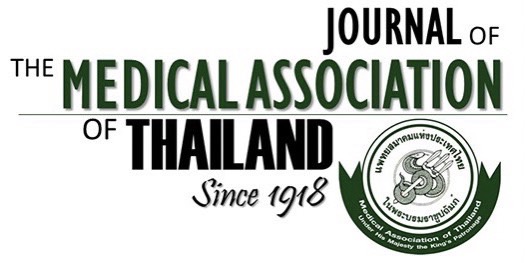Result of Video-Education on “Genetic Transmission in Thalassemia” to Thalassemic Patients and Their Parents
Siriorn Paholpak BN*, Arunee Jetsrisuparb MD**, Surapon Wiangnon MD**, Darunee Sangsahachat Dip Nursing Midwifery*, La-or Padtawaro Dip Nursing Midwifery*
Affiliation : * Pediatric Outpatient Unit, Srinagarind Hospital, Faculty of Medicine, Khon Kaen University, Khon Kaen **Department of Pediatrics, Faculty of Medicine, Khon Kaen University, Khon Kaen
Objective : To determine the degree of knowledge improvement and retention after a single viewing of a video
CD presentation on the genetic transmission of thalassemia among patients with thalassemia and their
parents.
Materials and Methods : The present research was approved by Khon Kaen University Ethics Review Board. A
video CD on the genetic transmission of thalassemia was created as an educational tool for improving
knowledge and retention. The validity and the informative usefulness of the video CD was evaluated, adapted
and approved by a thalassemia expert. Between November 1, 2002 and September 30, 2005, 61 subjects
(thalassemic patients and their parents, both groups were in reproductively active ages) at the Pediatric
Outpatient Unit, Srinagarind Hospital, Khon Kaen, consented to participate. Their ages ranged between 17
and 50 years (mean + SD = 36.5 + 9.4; median = 38.0) and 44.3% completed elementary while 26.2%
completed secondary school. Their occupations varied. Mothers, fathers, and thalassemic patients comprised
68.9%, 21.3%, and 9.8% of participants, respectively. In a quiet room in the Unit, each subject watched a
single viewing of the video. A validated questionnaire (Cronbach’s alpha coefficient = 0.79) with 40 true/false
items was used to evaluate baseline knowledge on the genetic transmission of thalassemia. Knowledge was re-
tested four times: immediately after the viewing, then at the 4th, 12th, and 24th week. The scores for each test were
skewed toward high scores; therefore, non-parametric tests were used for the statistical evaluation.
Results : The running time for the video CD was 20 minutes. The baseline knowledge on genetic transmission
was high. Immediately after a single viewing of the video, the knowledge level increased significantly (p =
0.000, 95%CI = 4.0-7.0) and was maintained up to the 12th week, after which (at the 24th week) there was a
significant drop (p = 0.020, 95%CI = -2.0 to 0) compared to the immediate post-test.
Conclusion : The authors’ video CD presentation effectively provided knowledge on the genetic transmission
of thalassemia to patients with thalassemia and their parents. Post-viewing knowledge increased signifi-
cantly and was retained for at least 12 weeks. Thereafter, a refresher should be taken.
Keywords : Education, Genetic transmission, Knowledge retention, Thalassemia, Video education



